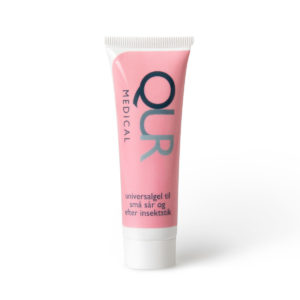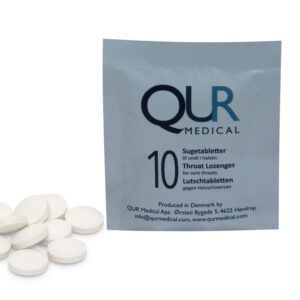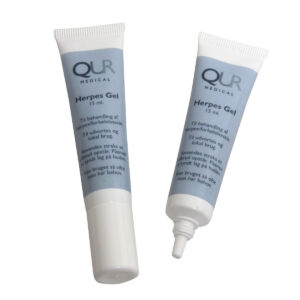Herpes is now a very widespread virus in the whole world. Herpes can be cold sores on the lips, but also appear in the eyes, mouth, nose and throat. In addition, there is a HSV type-2, also known as herpes genitalis, this type causes outbreaks on and around the genitals, on the balls and around the anus.
How herpes spreads
Herpes is a highly contagious virus and that is why many adults around the world have this disorder. Depending on whether it is type 1 or type 2, herpes is transmitted through direct skin contact or through sexual intercourse. This means that you don’t just get infected by touching a person with herpes, but it is wise to refrain from kissing and having sexual relations. HSV type 1 occurs on the face or in the mouth. It will typically spread through close physical contact such as kissing. In order to infect there must be direct contact between the skin or mucous membranes. It is possible to infect yourself; if you pick at a cold sore on your lip, forget to wash your fingers afterwards and then touch your eyes. Then you may risk infecting yourself.
HSV type 2 is transmitted through intercourse, oral sex or anal sex. Even if you use protection, there is a risk of getting infected. Herpes is contagious both when it is dormant and when it is in an outbreak, but the risk is bigger when you are exposed to infection from a person who has a herpes outbreak. There is also herpes zoster, which is also known as shingles. This virus spreads to the whole body and causes a violent rash that can be very itchy and painful, and which is caused by the same virus that causes chickenpox.
Different herpes virus symptoms
There are a lot of different symptoms of herpes. There is a difference between type 1 and type 2, but there are some general herpes outbreak symptoms that are the same for both types.
The vast majority of outbreaks will cause blisters and sores, that appear in the area of the outbreak. Herpes can also cause itching, redness, swelling and tenderness in the affected area. The first outbreak, also called the primary infection, will always be the worst outbreak.
You will typically experience stronger and more painful symptoms during the first outbreak than during the outbreaks you get later. At the first outbreak you may experience fever and muscle pain, a bit like a flu, and if it is type 1 herpes, it might also cause sore throat or corneal inflammation.
Herpes type 1 symptoms
The first symptoms of outbreak of herpes1 virus/herpes labialis are typically tingling, stinging and burning on your skin. The area will subsequently get blisters and sores if it is on the skin or the lips. If it is herpes in the eye, it will typically lead to corneal inflammation, also called herpes keratitis. The symptoms are pain in the eye, hypersensitivity to light and pinching of the eye. Some will also experience blurred vision, increased tear production and pain and redness in the eye. If you experience these symptoms, you must see a doctor urgently because you can risk permanently damaging the cornea. The doctor will treat you and you will be relieved and the situation is not dangerous.
Herpes symptoms in the mouth will also appear as blisters and sores, while there is a greater risk of developing a sore throat. The same applies to herpes in the throat, you will experience sore throat and maybe get a fever.
Herpes type 2 symptoms
If you suffer from herpes 2 the symptoms will most often be blisters and small sores. Herpes 2/herpes genitalis symptoms also include that an area of skin can be red, swollen and tender. If the sores are in the urethra, you will experience pain and burning when you go to the toilet. If you are a woman with herpes genital there is a tendency for burning and itching if the outbreak is located inside the vagina. There is a tendency for redness and swelling too. Herpes symptoms for men cover the same as for women when it comes to penile herpes. However, the small blisters will be visible and can cause itching and irritation on the penis.
Herpes zoster symptoms
Shingles occurs due to a reactivation of the chickenpox virus. You can only get shingles if you previously have had chicken pox. Shingles can affect humans of all ages, but is most frequently in the elderly and children who have been infected with chickenpox within the first year of life. The first sign of the reactivation of the chickenpox virus appears as a burning sensation along the nerve pathway in which the virus travels. The nerve pathways typically form semicircles around the body, and the pain and the subsequent skin rash will be seen as a blistering rash in a narrow area on one side of the body. Maybe around one eye or on one side of the face. A mild fever, headache and sometimes swollen lymph nodes also occur. 2-3 days after the pain begins, the typical rash develops: small blisters on a raised red background. The rash resembles a chicken pox rash – but is limited to a smaller area, typically only on one side of the body. The rash often peaks after 3-5 days. The blisters break, sores will form and they are gradually covered by scabs. After 2-3 weeks, the crusts usually fall off. It can be extremely painful to have herpes zoster and the symptoms vary greatly, depending on who has the outbreak. Some have a milder course others will experience a fever and will be in great pain.
When do you get symptoms of herpes?
How quick you experience herpes symptoms after infection or when the virus reactivates can vary from person to person. If it is the first time you have been infected, the primary infection will typically appear after a week of infection. If you have been infected with herpes 2 your incubation period will be 4-7 days before you experience symptoms. The symptoms will be small blisters and sores as well as redness, swelling and tenderness.
For how long do you have herpes symptoms?
For how long you must expect to have symptoms of herpes is difficult to predict. It really depends on how violent the outbreak is and who has the outbreak. The symptoms will subside after 1-4 weeks, and with genital herpes it can take up to three weeks before the small blisters disappear. The first outbreak is always the worst, and this also applies to the length of your symptoms. They will decrease during the period, but the course can last up to four weeks without treatment. Subsequent outbreaks are usually milder in terms of symptoms and usually last 1-2 weeks.
For how long does a herpes outbreak last?
An outbreak of herpes can last up to four weeks, but typically it will take 7-10 days. It is important that you ensure good hygiene so that you do not risk infecting yourself or others. If you receive medical treatment from a doctor or buy treatment products over the counter, the duration may be shorter and the symptoms milder, all depending on how your body and the virus react to the treatment.





